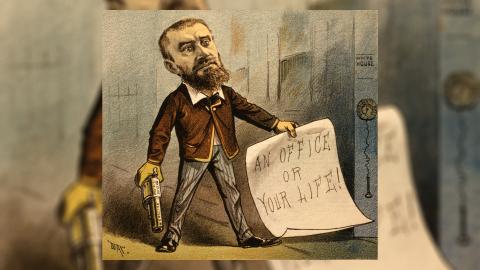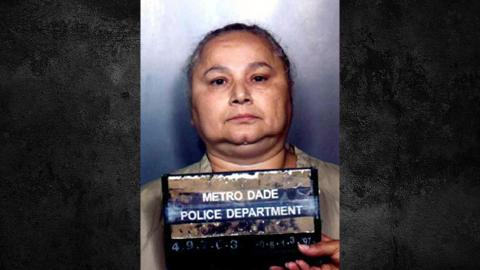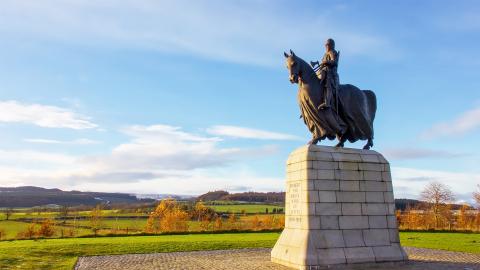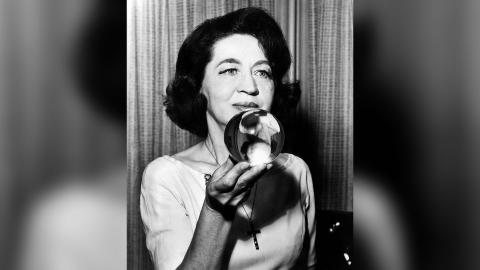A historian's epic pilgrimage reveals the secrets of England's forgotten queen
Bestselling author Alice Loxton undertook a 200-mile journey to learn about the life and legacy of one of England's forgotten royals, Queen Eleanor.
In this guest article, bestselling historian Alice Loxton details her epic adventure, walking from Lincoln to London in the footsteps of a 13th century funeral procession. She undertook this extraordinary challenge to learn more about the life and legacy of one of England's forgotten royals, Queen Eleanor.
Alice details the pilgrimage in her new book, Eleanor: A 200-Mile Walk in Search of England’s Lost Queen, which is on sale now. The book follows her journey over ancient paths and modern motorways as she uncovers the hidden history of Britain in the most surprising ways.
In September 2022, a strange spectacle played out in the streets of London. Over the course of six days, 250,000 people gathered in an extraordinary, 10-mile-long queue. What caused this curious phenomenon? These were ordinary people deeply moved by an unprecedented event: the death of a beloved queen, Elizabeth II.
Of course, Elizabeth was not the first to be commemorated on such a scale. Seven centuries earlier was another queen whose death was marked with more extravagance than any other British royal. Eleanor of Castile, the queen consort of King Edward I, unexpectedly died on 28th November 1290, in the village of Harby, in Nottinghamshire. Following this, her body was taken to nearby Lincoln to be embalmed.
Then, in December 1290, in an epic 200-mile procession, her body was taken on the road south to London, and honoured with ‘great devotion, with services and holy vigils’. Eleanor’s funeral took place in Westminster Abbey on 17th December, and she was later buried in a magnificent tomb beside the shrine of Edward the Confessor.

The 36-year marriage of Edward and Eleanor was a rare thing in the medieval world: a royal marriage of true, devoted love. On Eleanor’s death, Edward – a ‘great and terrible’ warrior king - was beside himself with grief. As he withdrew into isolation, he wrote the immortal words of his late wife: ‘who in life we dearly cherished, and who in death we cannot cease to love’.
Following this, Edward set out to commemorate Eleanor, and the funerary journey, with an extraordinary gesture. Twelve glorious stone monuments, ‘The Eleanor Crosses’, were erected at each town the procession stopped. It was a similar romantic gesture, in a way, to the Taj Mahal, built by Mughal emperor Shah Jahan in 1631 to house the tomb of his wife, Mumtaz Mahal.
Built in the 1290s, the Eleanor Crosses were revolutionary in scale and design. The final cross was located at the London hamlet of Charing, (derived from the Old English word ‘cierring’, meaning ‘river bend’ of the Thames), which gives us the name Charing Cross.

Curious to uncover the secrets of these forgotten monuments of love, in the final days of 2024 I embarked on an audacious challenge. On the corresponding dates of the original journey, I walked the route of the medieval cortege.
It was a gruelling task, sometimes covering 70 miles in three days. But the endeavour was worth it. Taking almost half a million steps through towns, villages, countryside, and cities, there were manifold treasures to behold. Morning skies softening from inky black to cornflower blue. Hedgerows sparkling with December frost. It was only by walking, by travelling at the natural human pace, that small, surprising details – a tombstone, an information sign hidden in the reeds, the strange clank of a gate – began to jump out at me.
As I walked, an important question arose. Was this a walk, or a pilgrimage? What was the difference, and did it matter? Luckily, for one day, I was joined by Dr Guy Hayward, who runs the British Pilgrimage Trust, a charity that celebrates the ancient practice of pilgrimage. Like monasteries, saints’ days, confession and mass, pilgrimage was a major part of English medieval life, but all these things were removed in the Reformation, and never really picked up again.
It is Guy’s mission to revive this lost practice. But what does pilgrimage look like in the modern world? For Guy, it’s a broad term, where pilgrimage is a practice, not a belief system. It can be spiritual or simply an act of walking in the footsteps of our ancestors, visiting sacred locations – cathedrals, ancient trees, river sources, holy wells, standing stones.
‘All you need to be a pilgrim is good intentions and a heart open for transformation,’ Guy explained as we strolled along the lanes, on the way to Dunstable. ‘Pilgrimage is not about how far you travel, but about how deeply you travel.’ It’s different to a walk, because you’re opening yourself up to experience the unexpected, heading towards an unknown destination. Tourists come with expectations, but pilgrims are open to what the journey will show and grow in them. Walking is for the body, pilgrimage for the soul.
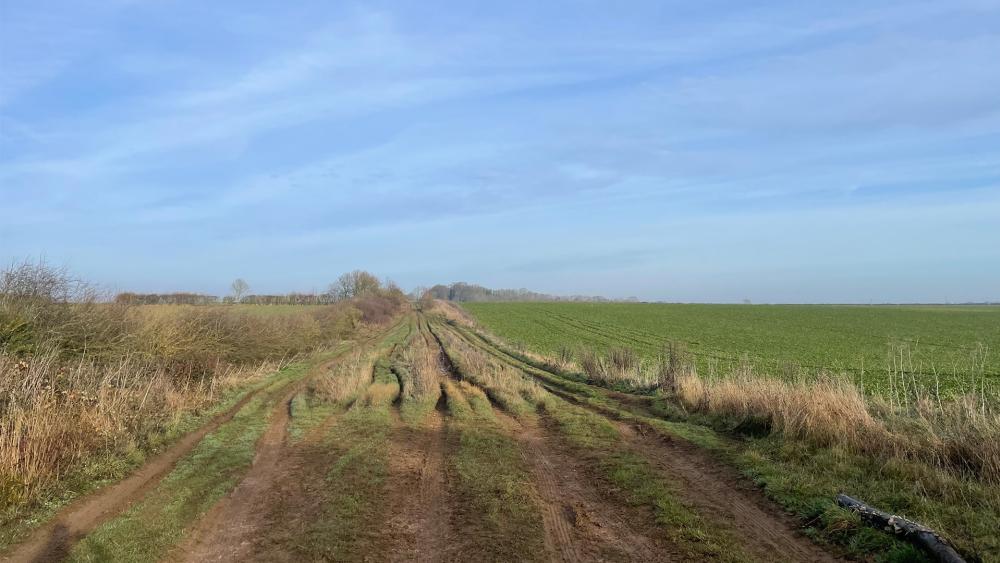
Certainly, the route from Lincoln to London did plenty to nourish the soul. Over those December days I passed through Lincoln, Grantham, Stamford, Geddington, Northampton, Stony Stratford, Woburn, Dunstable, St Albans, Waltham Cross, and London, where two crosses were built: Cheapside Cross and Charing Cross.
Three crosses survive today, standing tall in Geddington (a quaint village in North Northamptonshire), Northampton, and Waltham Cross. They are imposing, beautifully crafted stone monuments, which taper to a cross. Each is slightly different, but all contain statues of Eleanor, and bear her coat of arms.
But as I walked, it was even more thrilling to discover the curious ways Eleanor has been commemorated in the centuries since – the ways this history has been kept alive. At Stamford’s Sheep Market, I discovered an enormous, pointed needle – a modern interpretation of its 13th century forebear. In Dunstable, in the Queen Eleanor Shopping Precinct, I found a bronze statue of Eleanor, installed in 1985, waiting for me. In Northampton, there was a less romantic offering: an enormous roundabout which bears the name ‘The Queen Eleanor Interchange’.
In Stony Stratford, the entire gable end of a building was adorned with a magnificent mural, created in 2019 by the local artist Luke McDonnell. Here is Eleanor, with arms to her neck, head leant back, gazing wistfully to the sky, in a pose which echoes that of pre-Raphaelite muses.
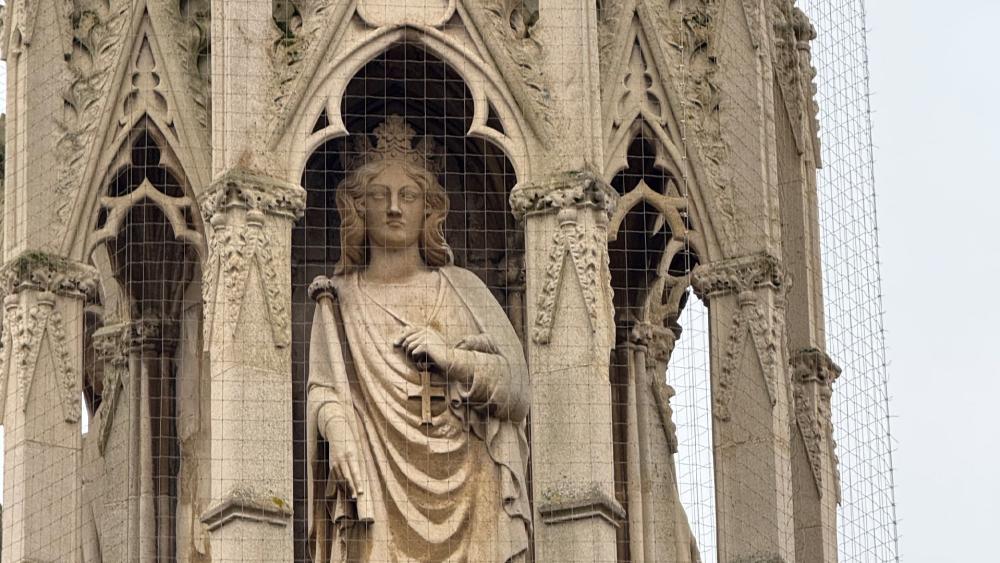
At the Charing Cross Underground Northern Line platform, the walls were decorated by a magnificent black and white strip cartoon telling the story of the original cross’s construction. The mural was created in 1979 by the brilliant artist David Gentleman, whom I was lucky enough to meet as part of my research.
So, this wasn’t just an amble from A to B, but an exhilarating adventure, slashing through the brambles of time. Though the Eleanor Crosses may be cold and inanimate in their physical form, these blocks of stone tell a story of people doing extraordinary things. Those stories - those threads - form an ever-growing, every-changing tapestry.
And though the picture that is woven is one of upheaval, and destruction, it is also one of brilliant creativity, uplifting beauty and – as is the case with the Eleanor Crosses, constructed by a grieving husband, 700 years ago – a love to last the ages.
Alice Loxton’s new book Eleanor: A 200-Mile Walk in Search of England’s Lost Queen is available now.

